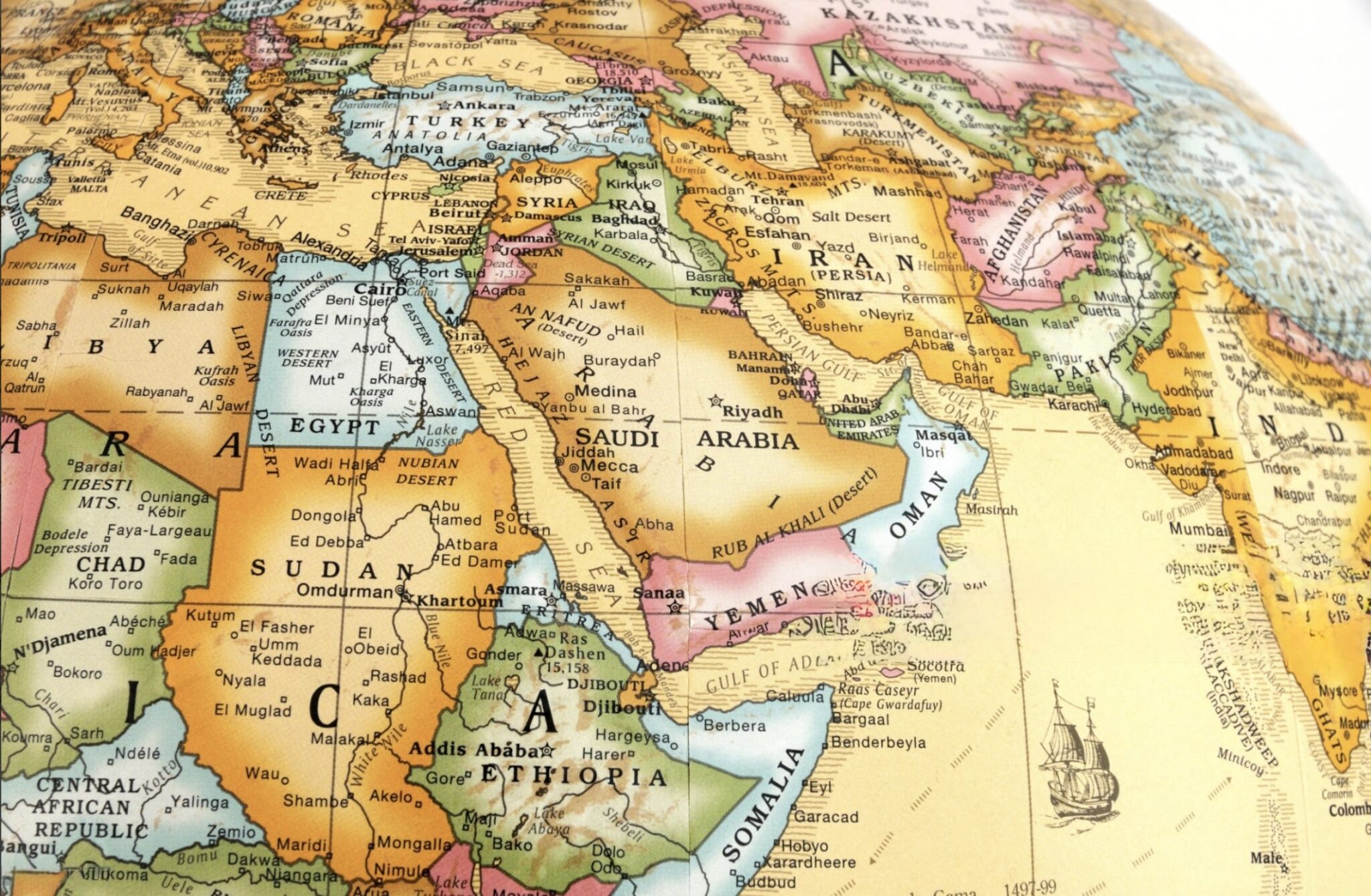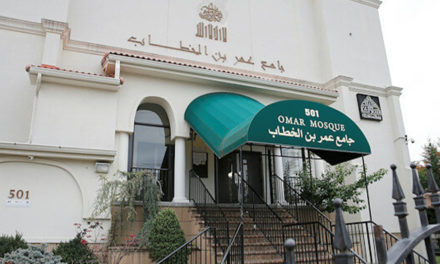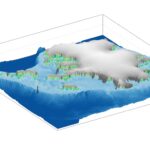Photo Credits: AWSeebaran
Who decides what we call regions of the world? Who looked at a map and thought: this is the Near East, that is the Middle East, and far off, the Far East? These names are not natural, nor are they neutral. They are products of a particular worldview, one that placed Europe at the center and arranged the rest of the globe in concentric circles of distance and difference. When we begin to decipher these terminologies, we find not objective geography but the imprint of a single dominant perspective: the European imperial gaze.
But should we continue to abide by these inherited code names? If the vocabulary itself was designed to serve the empire, then using it uncritically today risks more than historical inaccuracy. It risks perpetuating colonial frameworks in our political science classrooms, international relations discourse, and even in everyday speech.
Mapping the World Through Europe’s Eyes
The first thing to understand is that Near East, Middle East, and Far East are not indigenous concepts. They emerged in the 19th and early 20th centuries as European powers expanded their empires and needed ways to classify and manage regions according to strategic interest.
The Near East originally referred to the Ottoman Empire and its European-facing provinces, places like the Balkans, Anatolia, and the Levant. To British diplomats in the 1800s, this was the “doorstep” of Europe.
The Far East pointed in the opposite direction: East Asia, particularly China, Japan, and Southeast Asia. For Victorian travelers, this was the world of silks, spices, and distant horizons.
The Middle East entered usage later. In 1902, American naval strategist Alfred Thayer Mahan used it in the National Review to describe the Persian Gulf’s strategic importance, a region “between” Arabia and British India. Shortly after, The Times correspondent Sir Ignatius Valentine Chirol popularized it in a series of essays, expanding the “Middle East” to cover lands stretching from Mesopotamia toward India.
In other words, Europe was the reference point, and everything else was defined relative to it: “near,” “middle,” and “far.” Geography here was less about maps and more about power.
Code Names for Empire
Why did Europeans need such terms? Because names are tools. By carving the world into manageable “regions,” Britain, France, and later the United States could more easily justify and coordinate their colonial ambitions. The “Middle East” in particular was not an organically self-identified region but a strategic corridor, an oil-rich, sea-lane-crossed zone vital to maintaining global empires.
Historians like Kaveh Farrokh and Mohammad Ala have described these terms as “code names” for colonial gerrymandering. They bundled together countries with little in common: Turkey, Iran, Egypt, and the Arab Gulf, under a single umbrella that served Western priorities rather than regional self-conceptions. The term erased Persian, Turkish, and Arab distinctions, creating a vague yet useful shorthand for empire.
Edward Said’s famous critique of Orientalism fits squarely here: the “East” was imagined less as it truly was, and more as Europe needed it to be. By labeling entire swathes of territory as “Near,” “Middle,” or “Far,” Western powers reduced diverse civilizations into strategic chess squares.
Do We Still Need These Terms?
Fast forward to today: the world has changed, but the names have stuck. Universities teach “Middle Eastern Studies.” Policy think tanks publish “Middle East Briefings.” Even in Arabic, the phrase *al-Sharq al-Awsat* (الشرق الأوسط) is common currency.
But here lies the dilemma. If these names are colonial inventions, do we reproduce their worldview by continuing to use them? In international relations theory, this could be described as a form of complicity, sustaining structural biases by accepting them as natural. Just as bystanders reinforce power imbalances by doing nothing, scholars and policymakers risk reinforcing colonial legacies by relying on colonial categories.
The danger is not merely semantic. How we name a region shapes how we think about it. Lumping Iran, Turkey, and the Arab world into the same “Middle East” flattens cultural and historical differences. It suggests they form a coherent unit when, in fact, their political trajectories diverge dramatically. Worse, it implies that Europe remains the center against which all other regions are measured.
Alternatives: West Asia or Beyond?
Some governments and scholars have proposed alternatives. “West Asia” or “Southwest Asia” are geographically accurate terms that decenter Europe and re-situate the region within the Asian continent. India once attempted to promote “West Asia” in diplomatic usage. Academics sometimes prefer “Southwest Asia and North Africa” (SWANA), a label that highlights regional continuity while avoiding colonial language.
Yet these alternatives face inertia. As one observer bluntly put it, the term “Middle East” just stuck. It is convenient, familiar, and widely recognized, even among those who critique it. This paradox illustrates how deeply colonial categories can embed themselves into global discourse.
Naming as Power
Ultimately, the debate is not about choosing one label over another, but about recognizing that naming is never neutral. When we say “Middle East,” we are not just describing geography; we are invoking a legacy of empire, strategy, and control. To accept these names without reflection is to accept the worldview of those who coined them.
So perhaps the real task is not to police language rigidly, but to approach it critically. Scholars, journalists, and policymakers alike must ask: whose perspective is embedded in this name, and whose is erased? By doing so, we take a small step toward decolonizing not only our vocabulary but our understanding of global politics.
The Middle East was not named by its inhabitants, but by outsiders who needed a convenient way to slice up the world for imperial management. Alongside the Near East and Far East, it reflects a Eurocentric cartography that made Europe the reference point for everyone else.
More than a century later, these names still shape the way we think, teach, and analyze. The question before us is simple yet urgent: do we remain complicit in sustaining colonial frameworks by continuing to use them uncritically? Or can we reimagine how we talk about regions through terms like West Asia, or through more nuanced, self-identified categories?
In the end, naming is not just about words. It is about power, perspective, and the kind of world we choose to reproduce.
By: Laila Mamdouh / Arab America Contributing Writer














